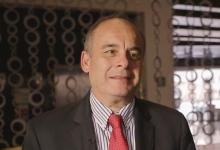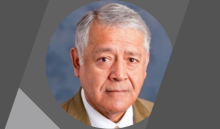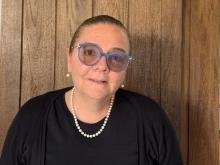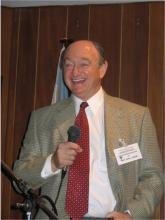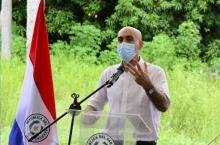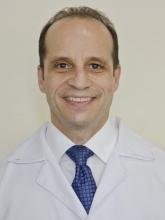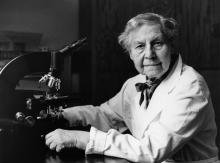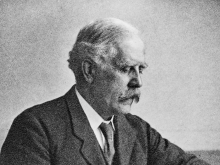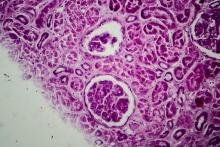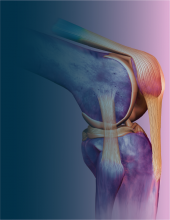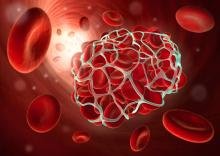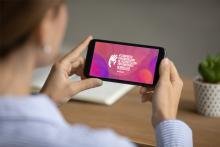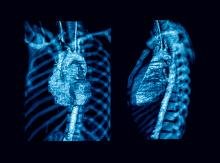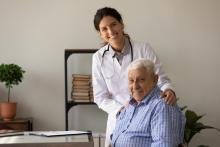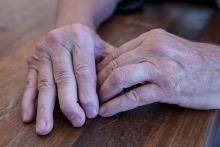Shared decision-making in Latin America
By: Alberto Palacios B.
Head of the Department of Immunology and Rheumatology at Hospital de los Angeles Pedregal in CDMX
Cite as: Palacios Boix, A., 2022. Shared decision-making in Latin America / Global Rheumatology. Avalaible from https://doi.org/10.46856/grp.22.et139
Back in the mid-eighties in some public institution, together with the Chief of the Education Section, we decided to prepare a questionnaire for patients – most of them low-income – to agree to participate more actively in their diagnostic process and treatment. This questionnaire also included a space for critics and comments about the medical interventions, the physician attitudes and the paraclinical care received throughout their hospitalization.
Those chronically ill patients – cirrhotic, leukemic, those with kidney failure or cardiopulmonary disease – regarded us with a mixture of mistrust and apprehension. No one had ever told them that they could make decisions or relieve their physicians of the intrinsic authority they attributed to the management of their conditions.
Most of them had arrived at the hospital seriously ill, unaware of the pathophysiology they were living with, and motivated by their relatives to deal with some worrisome symptom: edema, pale skin, gastrointestinal tract bleeding, anemia, or fever.
I particularly remember one of them, don Artemio, who suffered from intense bone pain due to multiple myeloma, a weird diagnosis that escape any possible explanation for his precarious sociocultural level. We tried to explain him that this disease consisted in the presence of “crazy” cells deposited in the bone marrow that, by growing so fast and uncontrolled, "widened" the bones and made them more fragile. He then agreed to change his hospital bed for a Stryker bed, which was in itself a cumbersome and unimaginable for a peasant like him.
One night, noticing that he was constantly moving in his bed which has already caused three pathologic fractures, we approached him to ask him to stay still. The conversation went as follows:
-Artemio, please stop, your calcium levels are sky-high, and your bones are more fragile every day- the resident on duty said to him.
-Sir, you have to cooperate- added another one.
-Yes, doctors- don Artemio replied in a submissive attitude -I always cooperate.
This conversation, funny as it may sounds, reflects the lack of communication we tend to have with our patients. From a paternalistic perspective, when we ask patients to “cooperate” with their care, we are placing them in a somewhat confusing position. Usually, patients adopt a passive and demanding attitude toward care in exchange for guidance, direction, and unquestioned moral authority from their physicians. So, assuming that suddenly, by a politically correct initiative, we will give them back their autonomy and empower them, is somewhat naïve.
In developing countries where citizen participation in democratic, institutional, or judicial decisions is weak and subject to various barriers, most of them of educational nature, pretending that patients take control of their destiny in the face of the uncertainties that come with an acute or chronic condition is not as simple as it may seem.
In the United States, where social codes and the practice of defensive medicine -stifled by restrictions and legal threats- are the norm, it seems natural that for four decades patient consensus has been sought in the framework of health care (1). This practice has reduced costs, allowed lawsuits to be limited and, above all, facilitated clinical care by favoring on-the-fly education and a more rational use of diagnostic and therapeutic resources. In this light, it seems like a praiseworthy model to emulate.
But the implementation of this model in less pluralistic and more vertical societies, such as those in Latin America or other developing countries, where authoritarianism continues to prevail in almost all spheres, is no simple task. Here patients abide by the moral authority of the physician without question, even when they may have reservations about their qualifications or best intentions. I am convinced that American television series have been more instrumental in provoking such skepticism than the practice of medicine itself in our latitudes.
The recent covid-19 pandemic, whose fifth wave we have just entered, has led to increase participation of non-professionals in certain preventive and public health measures. Never before in human history, people have encouraged immunizations or digital oxygen saturation or blood pressure measurements at home as they have since the spring of 2020. The knowledge acquired in social networks, once very piecemeal, has been refined and patients with a certain cultural level have learned to look for symptoms and associate them before coming to their consultation both to provide elements of judgment and to test how updated their physicians are.
However, shared decision-making in Latin America is going to a rather slow pace. To a large extent, physicians themselves are reluctant to abandon their authoritarian and paternalistic position since this entails prestige, social benefits, and even economic advantages over less assertive competitors.
I have used this paradigm with an allegory in a 2018 publication based on the asymmetrical exchange given by Fyodor Dostoevsky in his chapter “the Grand Inquisitor” (2, 3). In this story, he confronted a medical student who is displeased by the concealment of a failed procedure on a patient with polyarteritis nodosa, situation that leads her to undergo a diatribe by the Chief of Medicine, who tells her off for her candor and for overlooking the three powers of medicine, namely: miracle, magic, authority.
With this information at hand, we can suggest that shared decision-making in medicine is the ideal to which we all aspire, physicians and patients equally. The former, because it will reduce our unilateral responsibility with respect to the wealth of diagnostic elements and therapeutic options that may arise in complicated cases or where the integrity of a patient is at stake. The latter, because by taking care of their health -even with the natural limitations posed by their limited knowledge or the weight of subjectivity- they will undoubtedly be able to offer better discernment scenarios and at the same time demand the collaboration and guidance of the physician in situations of conflict.
The ideal outcome should be a broader, duplicated and expanded perspective of the diagnostic and therapeutic process, with more successful and less costly outcomes both for patients and health care providers.
A natural trial has taken place in the field of private medicine, since the cost of medical care and the socioeconomic level of the persons who can afford it create a scenario where decisions cannot (and should not) be arbitrary or secret to the patients and their families. Here is a recent story to illustrate this.
Mr. Lucio Stevens, a businessman whose relatives I have treated for different acute and chronic conditions, came to me complaining of fatigue and vague digestive symptoms. His laboratory tests (which he had brought with him prior to the visit, having himself decided on the most convenient tests to be taken) showed no alarming data except for a slight hyperglycemia and serum albumin in marginal numbers.
He is a grim-looking, thin man, with a practical bent that he applies in his daily life. At 63 he boasts of doing cardio four hours per week, not smoking, and not consuming more than three glasses of wine twice a month. Besides the recent laboratory tests, he also brings with him a folder in which he has filed the results of his medical checkups over the past five years, “in case you want to have a look”. Despite being contemporaries and knowing his family for more than a decade, he treats me with deference and avoids calling me by my first name.
The physical examination does not show any abnormal data but given his insistence about his intestinal discomfort and the fact that he has lost weight and appetite, I decide -after having his express approval- to perform an abdominal CT scan with contrast. A few days later, he came to my office with the plates and a USB stick that showed a tumor in the tail of the pancreas, heterogeneous and displacing the duct of Wirsung. The suspicion of a malignant neoplasm is the first thing that comes to my mind, and I debate for a few minutes how should I tell him so that he takes timely action and is not overwhelmed by an ominous diagnosis.
The conversation goes as follows:
-What I see here is a mass, a tumor in your pancreas, but I couldn’t say for sure whether it is malignant of benign. What do you think, Lucio?
-Regarding what, doctor? Do you recommend surgery?
-What I can suggest is seeing a colleague of mine expert in pancreas problems and then you can decide together whether to do a biopsy or to remove it. The truth is that it is a fortuitous finding, Lucio, I have no elements to think of something incurable.
-That is reassuring, doctor, but I meant to ask you: What would you do in my place if it is cancer?
-I would start treatment immediately, Lucio. Nowadays, both excisional surgery and treatments, chemotherapy, or immunotherapy, offer a good percentage of remission. But I insist: there is no conclusive data that it is a malignant tumor. Visit Dr. Wong; I assure you that he is a very competent and very ethical professional. Of course, feel free to consult whomever you prefer.
-Thanks, doctor. I will keep you posted.
This case illustrates a clinical situation where the therapeutic decision, although guided by the physician, leaves the power in the patient to follow his/her advice or to seek other options and opinions.
It is worth noting that this is about an informed, competent patient who has the intellectual and economic resources to seek alternatives not always available for the bulk of the population in Latin America, where social security is limited and limiting.
Such a conversation is uncommon in public hospitals or in regions where primary care is underqualified. Nevertheless, I am convinced that it is possible to implement diagnostic and therapeutic instruments and scenarios where decisions are no longer unilateral and arbitrary and where patients, despite their level of knowledge, are always worthy of deciding and opting for the treatments and interventions that best suit the magnitude of their condition.
Physicians, in my opinion, should be educators first and foremost, and therefore we should be careful that our professional, economic, or reputational incentives, no matter how valid or justifiable they may be, do not get in the way of the concrete and immediate benefit of our patients. Ethics in the practice of medicine is measured by the results of our judgments and clinical interventions, but also by how much we involve our patients in the care of their bodies and their destiny.
References
1. Frosch, D.L. & Kaplan R.M. Shared decision making in Clinical Medicine: past research and future directions. Am J Prev Med 1999; 17 (4): 285 - 294.
2. Palacios Boix, Alberto. Espectro íntimos. Apuntes en torno al miedo. Siglo XXI editores, México, 2018. Págs. 13 - 23.
3. Dostoyevski Fiódor. Los hermanos Karamazov. Parte II. Libro V. Capítulo V: “El gran inquisidor”. Aguilar, Madrid, 1953. Págs. 209 - 223.


















